25 Year Retrospective of the Close Combat Series (part three)
 By Patrick S. Baker
By Patrick S. Baker
The first phase of the Close Combat game franchise came to an end in 2000 with the fifth game in the series, Close Combat V: Invasion: Normandy. Business and management issues left the franchise’s future in doubt, with only three developers still at Atomic still working on it.
Then came the United States Marine Corps (USMC) to the rescue. Militaries worldwide have used “serious games” as training tools ever since the early 19th Century when Kriegsspiel (wargame in German) was created for the Prussian Army. The American Military was impressed by the Close Combat games, especially the realistic physiological modeling. So, in 2003 the USMC reached out to Atomic to see about building a Close Combat game as a training aid.
In 2004 the USMC and Atomic partnership produced Close Combat: Marines: “A tactical decision-making simulation of modern warfare”, the game was released in the September 2004 issue of the Marine Corps Gazette. It was used as a tactical instructional tool for junior leaders. A civilian version of the game was released in 2004 as Road to Baghdad. This was the first post-World War Two entry in the franchise and the only one without Close Combat in the title.
Road to Baghdad was followed by Atomic working with Destineer Publishing and the USMC to create a military first-person shooter called Close Combat: First to Fight which “combined Destineer’s first-person technology with Atomic’s military expertise”.
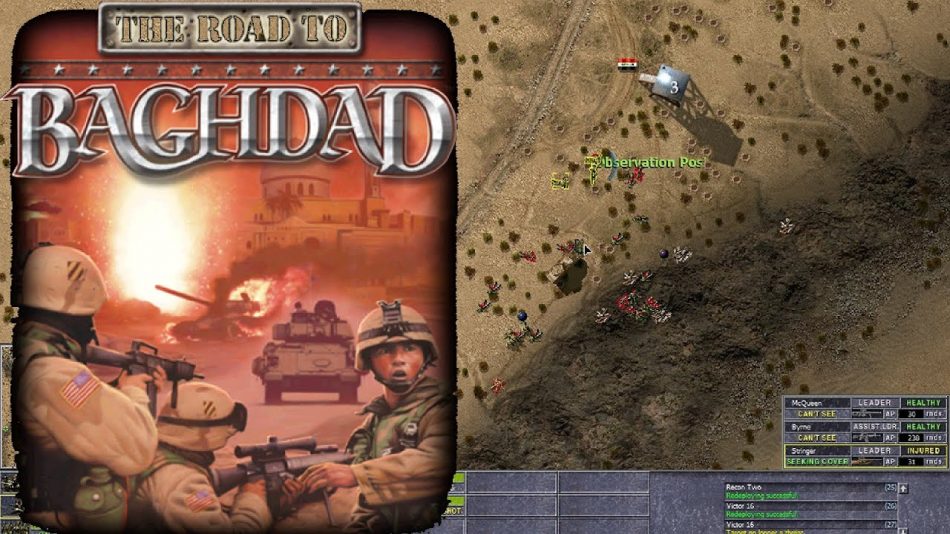 The game was the franchise’s only first-person shooter. The game was developed as a training tool for the military before being released commercially in 2005.
The game was the franchise’s only first-person shooter. The game was developed as a training tool for the military before being released commercially in 2005.
Also, in 2005, Atomic and Destineer announced a game called Close Combat: Red Phoenix, based on the Larry Bond novel about a second Korean War, but it was later cancelled. Then in May 2005, Destineer purchased Atomic Games specifically to revive the Close Combat series as commercial games. By this point the first five games had sold more than 1.2 million units.
In 2006, Atomic and Destineer developed Close Combat: RAF Regiment, a training simulation similar to Close Combat: Marines, but for the British Royal Air Force ground regiment. This was the second modern simulation of the series. The game was only offered to the RAF and never released commercially.
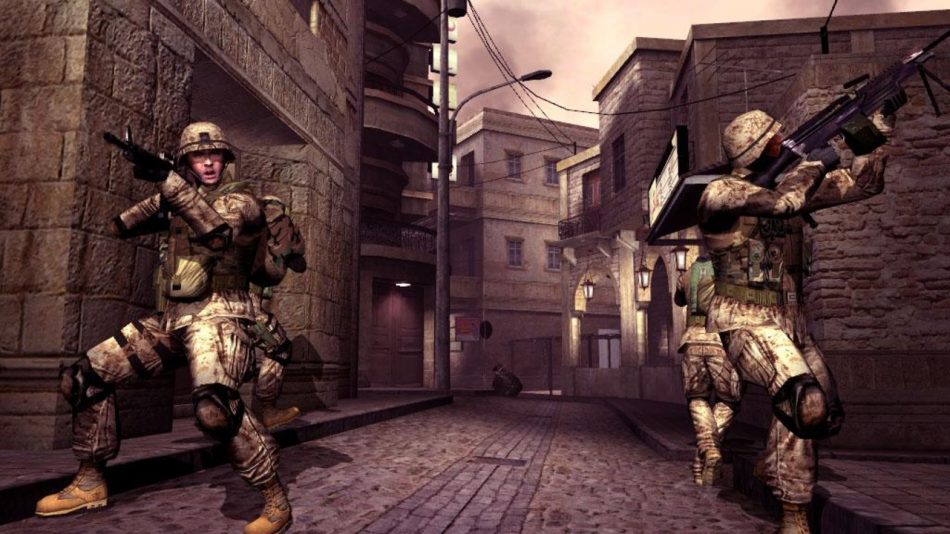 That same year Destineer licensed the Close Combat name and code as an intellectual property to Matrix Games and the two companies, along with game developer, CSO Simtek, made plans to remake and update early versions of the games. The developers elected not to revise the original Close Combat game, because of “the age of the code, and the fact that the series and game engine had changed dramatically . . .” since 1996.
That same year Destineer licensed the Close Combat name and code as an intellectual property to Matrix Games and the two companies, along with game developer, CSO Simtek, made plans to remake and update early versions of the games. The developers elected not to revise the original Close Combat game, because of “the age of the code, and the fact that the series and game engine had changed dramatically . . .” since 1996.
In 2007, the first remake from the Matrix and CSO Simtek partnership was released as Close Combat: Cross of Iron which was an expanded and updated version of Close Combat III: The Russian Front. Next, also in 2007, came Close Combat: Modern Tactics, an update of Road to Bagdad.
In 2008, Close Combat: Wacht am Rhein, a revision of Close Combat IV: Battle of the Bulge was published. Next, Matrix partnered with Strategy 3 Tactics to develop Close Combat: The Longest Day, a remake of Close Combat V: Invasion Normandy which was released in 2009. All the updated versions of the games included much improved graphics, so American soldier looked less like shrubs, and also added strategic/operational maneuver layers and force selection options.
In 2010, Matrix, released Close Combat: Last Stand Arnhem, set during Operation Market Garden and developed by Strategy 3 Tactics and Black Hand Studios. This was not a remake of Close Combat II: A Bridge Too Far, but a new game.
In 2012, Matrix worked with Slitherine Software to release another new Close Combat game, Panthers in the Fog. Panthers takes place during Operation Lüttich, better known to the Allies as the Mortain Counterattack. Panthers was the first Close Combat game to feature 32-bit graphics. In 2014 the companies released Gateway to Caen, which takes place during the British offensive, Operation Epsom, also called the First Battle of the Odon. Many reviewers remarked that these games lacked new features and innovation, especially missing true 3D graphics and an improved AI. As of 2018, the combined sales of the franchise’s entries were more than 5 million units.
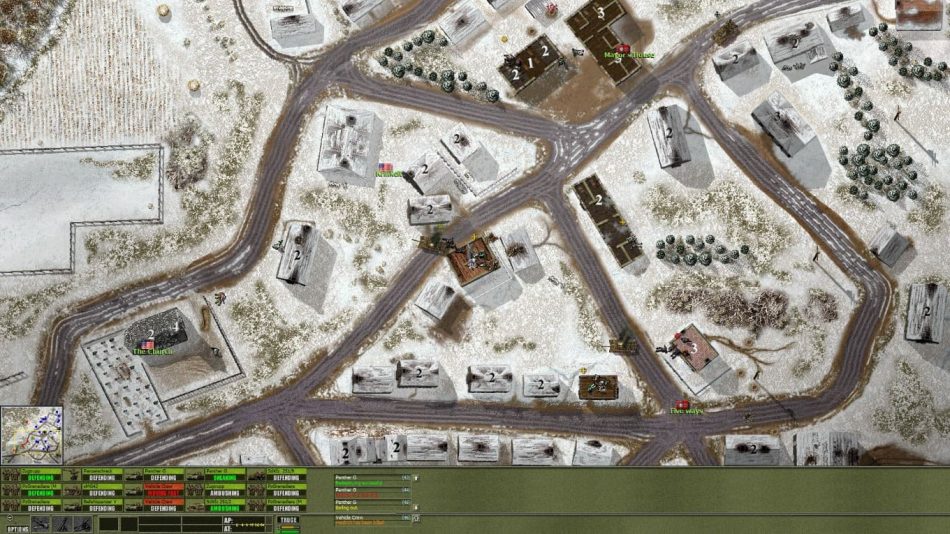
In 2019, the developers from Slitherine Ltd. and Matrix Games took a great leap forward with Close Combat: The Bloody First (CC:TBF). CC:TBF was set in World War Two, and depicted the battles of the United States Army First Infantry Division, sometimes called The Big Red One, or, in this case, The Bloody First..
CC:TBF used the new 3D Archon game engine. Besides true 3D graphics, CC:TBF jettisoned the Campaign Map layer and instead as the player advanced through a campaign, they got to make between mission timing choices. On the offensive, the player decided whether to hurry into the next battle immediately, or pause in order to rest and replenish. These lulls allowed the enemy to recover, and bring the campaign deadlines closer, so pausing was not always the best choice. You can even launch night attacks. This new timing feature was more realistic than a company commander maneuvering on a Campaign map. They also added a unit “customization” module where the player could modify their battle groups in detail. The player could choose a main unit of between 9 and 14 units as well as support troops, then could tailor units by splitting off specialized teams, such as tank-hunters, or snipers, or adding an additional BAR, or a rifle-grenade launcher.
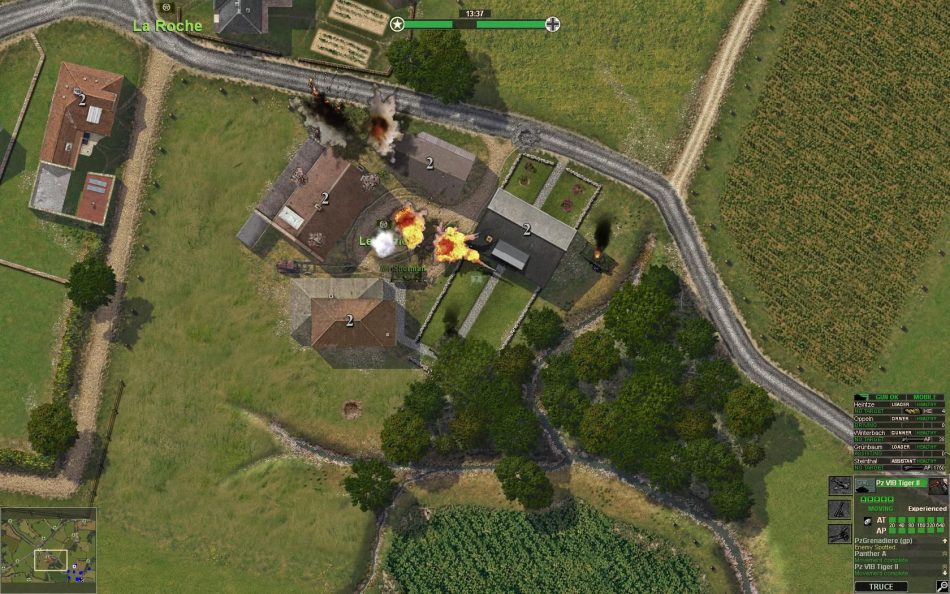
Also added was a personnel management tool. The soldiers in the campaign, or an operation, were carried over between battles, with improved performance as they gained experience. They player reviewed their records, skill levels, and any medals won. Rotating the soldier was paramount as keeping the same teams constantly in battle wore them out mentally and physically.
Despite these innovations the game suffered from serious programming problems. The game was full of examples of tanks passing though obstacles, units unable to fire at enemy in the same room, and the game players suffering a Fatal Exception every couple of hours of play. However, patches came every few weeks and as of this writing most of such issues have been fixed. Now, the game is a worthy holder of the Close Combat name.
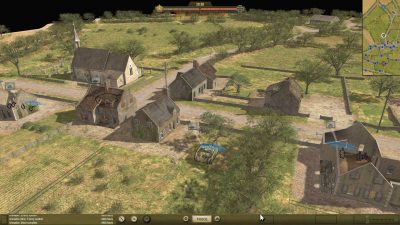
The Close Combat franchise is one of the most influential, popular and critically successful game series in existence. The game series have soldiered on for the last twenty-five years and will, hopefully, continue for many years to come.
Patrick S. Baker is a former US Army Field Artillery officer and retired Department of Defense employee. He has advanced degrees in History and Political Science. He continues to use all his education and experience to play more games and annoy his family.

I owned CC 3 and 4 way back when. Which one of the modern games would be a good (re-) entry point to the series? Which is the most well-regarded?
An informal survey done by me has said 2010s “Close Combat: Last Stand Arnhem” is the best of the new games. Personally I’m very fond of “Panthers in the Fog” Hope that helps.
An informal survey done by me has said 2010s “Close Combat: Last Stand Arnhem” is the best of the new games. Personally I’m very fond of “Panthers in the Fog” Hope that helps.
Thanks!